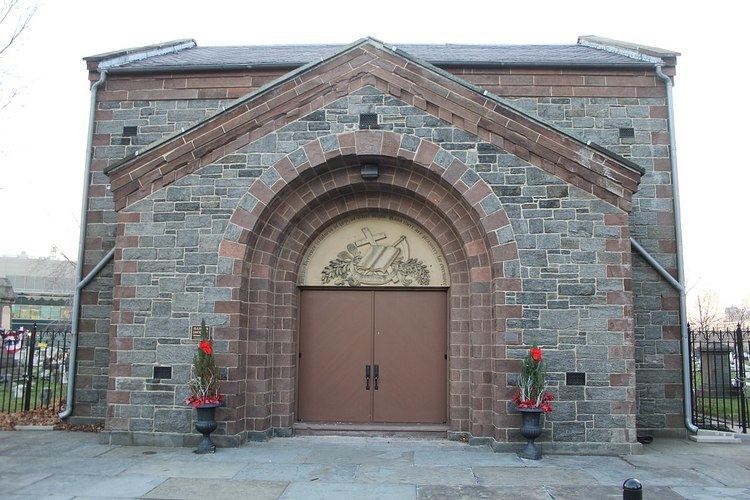NRHP Reference # 01001438 Area 2 ha Added to NRHP 11 January 2002 | Year built 1668 | |
 | ||
Location 159th St. and Beaver Rd., Jamaica, New York Burials James Rider, Henry Van Aernam, James M. Oakley Similar King Manor, 103rd Street–Corona Plaza, Ozone Park–Lefferts Boulevard, Grace Episcopal Church C, Jamaica Center–Parsons/Archer | ||
Prospect Cemetery is a historic cemetery located in the Jamaica section of the New York City borough of Queens. It was established in 1668 and known as the "burring plas." The cemetery’s original main gate was on Beaver Road which led from Sutphin Boulevard to Jamaica Avenue. The cemetery was generally known as the Presbyterian burial ground and is one of the few remaining Colonial cemeteries in Queens. The First Presbyterian Church (found in 1662) was given control of the care and maintenance of the cemetery after it was taken from the care of the town. There was a dispute between this Church and the Grace Episcopal Church (founded in 1701) in regard to which church would maintain the cemetery.
The cemetery includes approximately 240 family plots containing 2,100 burials and date from the founding of the cemetery to the late 20th century. One such family is the Brinckerhoffs, which carries two Dutch names: “Brenger” meaning messenger and “Hof” meaning court. The first and earliest Brinckerhoff to arrive in New York City was Joris Dirckson, who arrived in North America in 1638 from the European Netherlands for a better life. Furthermore, two researchers from the Rufus Chapter of the Daughters of the American Revolution discovered the names of 54 individuals who served as soldiers during the Revolutionary War, who were buried in Prospect Cemetery. The last burial was in 1988.
Included on the property as a contributing building is the Chapel of the Sisters, erected in 1857. Nicholas Ludlum was personally responsible for the construction of the “Chapel of the Sisters,” named so to honor his three daughters who died years before. In 2007, Queens Borough President Helen Marshall, in collaboration with preservation and community groups, celebrated the restoration of the Chapel of the Sisters, which took almost five years of fundraising by the Greater Jamaica Development Corporation and the New York Landmarks Committee. The main highlight in this project was to restore two rose windows decorating the north and south facades of the chapel. It was built as a Romanesque Revival building and measured approximately 40 by 40 feet and 25 feet high.
Before, during, after the 1980s, plans were made by various groups, committees, and individuals to properly maintain and preserve Prospect Cemetery. During this time, Prospect Cemetery had become a location of deterioration and vandalism beneath trash, poison ivy, and broken tombs. Amy Anderson, who took it upon herself to correct this stagnation/problem, stated “My ancestors came here and settled this country. I’m an American. I’m not going to let this go”. Not only was the cemetery found to be an official New York City landmark, but it was, according to Dr. Sherene Baugher, found to be the fourth-oldest surviving cemetery in the five boroughs. Furthermore, as part of the National Guard’s Challenge Program for high school dropouts, 80 National Guard members and 14 students spend the day (Saturday, November 23, 1998) hacking, raking, and clearing the front half of the cemetery (near 159th Street and Liberty Avenue). Aside from restoring the dignity of the graves within Prospect Cemetery, the cleanup of about an acre of this property helped to destroy an environment conducive to drug trade and crime, as stated by event organizers.
The City Landmark Commission has stated that Prospect Cemetery is the oldest cemetery in New York and that it is regarded as a place of great historical and aesthetic interest, as well as one the city’s important cultural locations. It was listed on the National Register of Historic Places in 2002.
